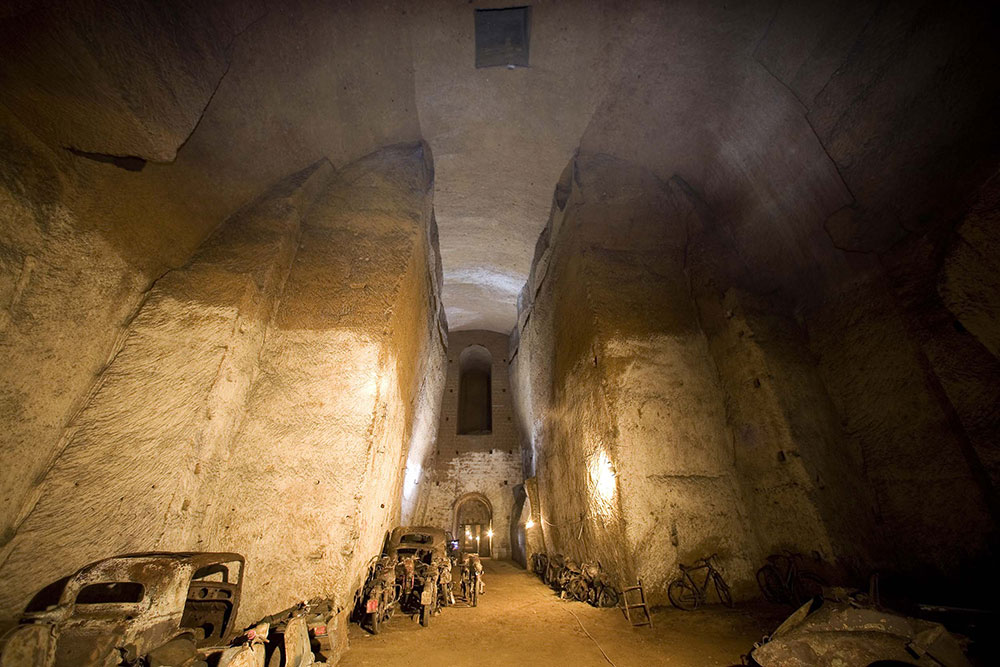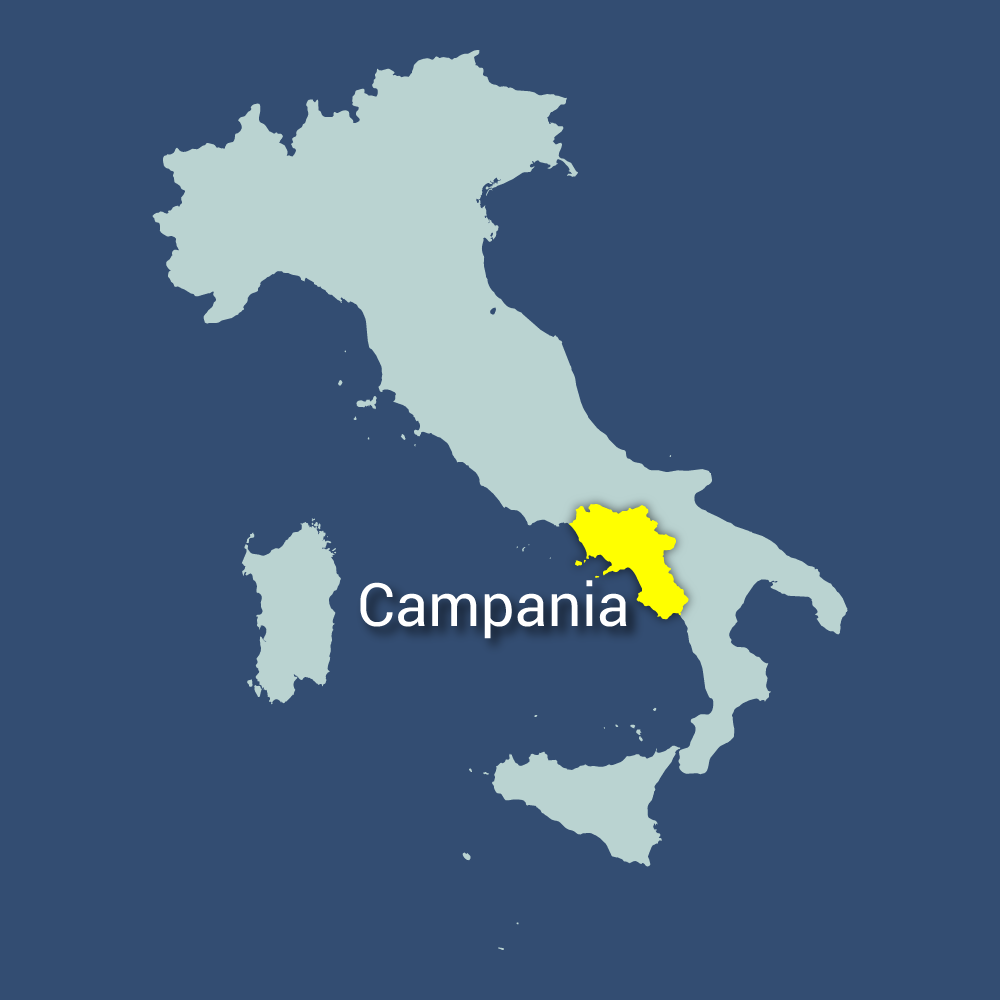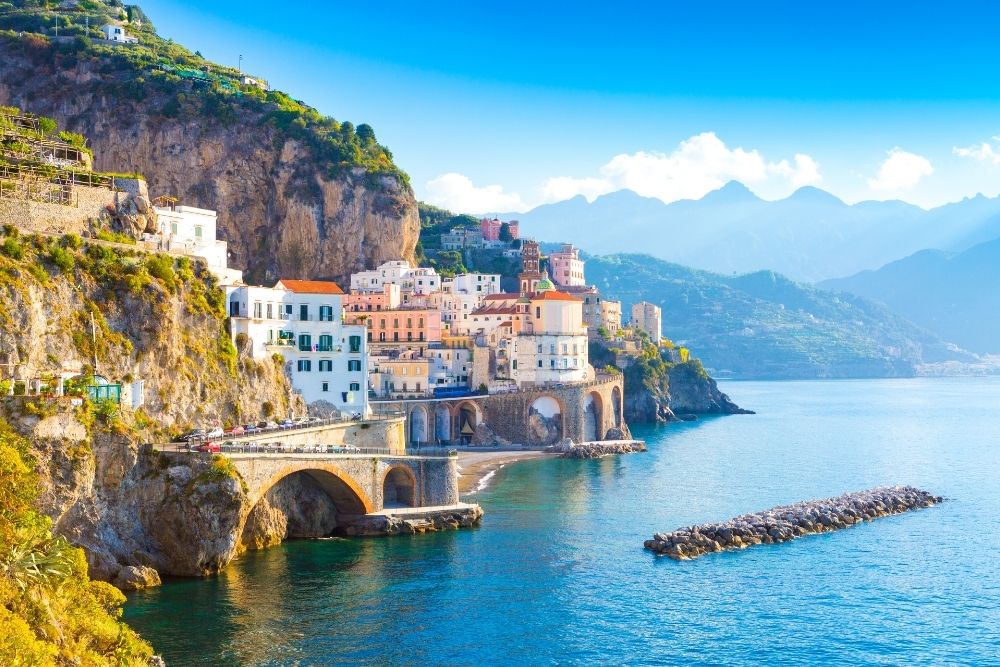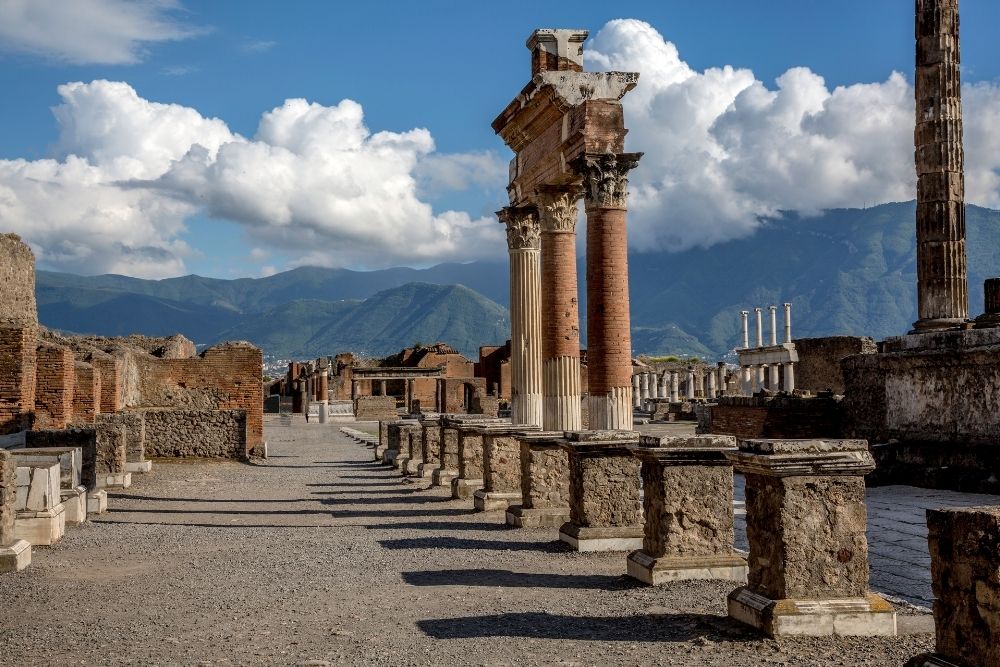
Bourbon Tunnel, Campania
If you are planning a trip to visit the intriguing city of Naples, you might schedule an outing to the Amalfi Coast, dinner at a famous pizzeria, or a wander through the famous ruins of the ancient city of Pompeii. The city of Naples itself is also spoilt for choice with a vast number of beautiful churches and fascinating museums to visit. But if you dare to venture a little outside the box, you could wander into a lesser known, yet equally captivating city. For a visit to this city you won't even have to leave Naples. For a visit to this city you will need to divert your eyes away from the sights and sounds of the Neapolitan streets and focus them about thirty meters below your feet.

Photo: www.tunnelborbonico.info
Built under Naples is a labyrinth of tunnels, cavities, aqueducts and reservoirs, a small number of which can be explored by visitors today. To understand the significance of these underground spaces we must travel back about 2,500 years in history.
The city of Naples is built largely on tuff; a light and porous yet strong rock formed by the consolidation of volcanic ash. These properties meant that tuff was an ideal building material and so it was quarried and brought up through shafts. The caverns formed from this process were later used as reservoirs into which water was diverted from the elaborate aqueducts created by the Ancient Greeks. This system provided water to the palaces and wealthy residents above using deep reservoirs and cisterns.
The ancient water system was expanded more and more over the years as more tuff stone was needed for buildings. The system was actually used right up until 1885 when a terrible epidemic of cholera forced it to be closed down and modern waterworks to be adopted that are still in function today.

Photo: www.tunnelborbonico.info
The residents of Naples then decided to make use of these large areas of vacant underground space in the form of a rubbish dump. It wasn't until the Second World War that this underground system was put to good use once again. During the war, Naples was heavily bombed and the citizens of the city decided that the areas which once carried water could now be used as a refuge. There was not enough time for these areas to be cleared out so soil was placed over the rubbish to create a floor level about four meters higher than the actual floor level would have been.
Wells that were used to collect water were closed over to protect the people against bombs that would fall through them. Once the war had ended, rubble was unloaded in the underground and citizens continued to use the wells as rubbish dumps.
It has taken roughly twenty years of relentless digging, cleaning, searching and discovering but today we can finally uncover a very important part of Neapolitan history. Only a small portion of the underground is currently open to visitors but more and more sections are constantly being cleaned out and explored.

Photo: www.tunnelborbonico.info
We may never completely understand how it felt to be a refuge sheltering from an air raid during the Second World War but with the help of some fantastic guides who take you through the tunnels, you can certainly empathise. You only have to see the children's toys scattered around, or the mattress where a whole family would sleep or the words of survival scratched into the rock walls to get chills down your spine at the thought of what life must have been like for entire families. Considering how often air raids would occur, citizens would not have time to find their families before they seek shelter under another part of the city so they would be plagued with thoughts of the safety of their loved ones.

Photo: www.tunnelborbonico.info
The Bourbon Tunnel (or Il Tunnel Borbonico) is one such area that visitors can experience the underground city for themselves and hear tales of the people that lived a part of their lives thirty meters below. You can also see some of the relics and treasures that were left behind from that era. Tours in the Bourbon Tunnel run on Friday, Saturday and Sunday with special tours on the weekend in which you explore the underground on your hands and knees or on a raft. Whichever tour you choose, you will get an insight into a part of Neapolitan history that you will never forget.
Written by Jacqui Capek
© Understanding Italy 2013
This article has been especially commissioned for Understanding Italy. Any reproduction of this material, all or in part, is strictly forbidden.







